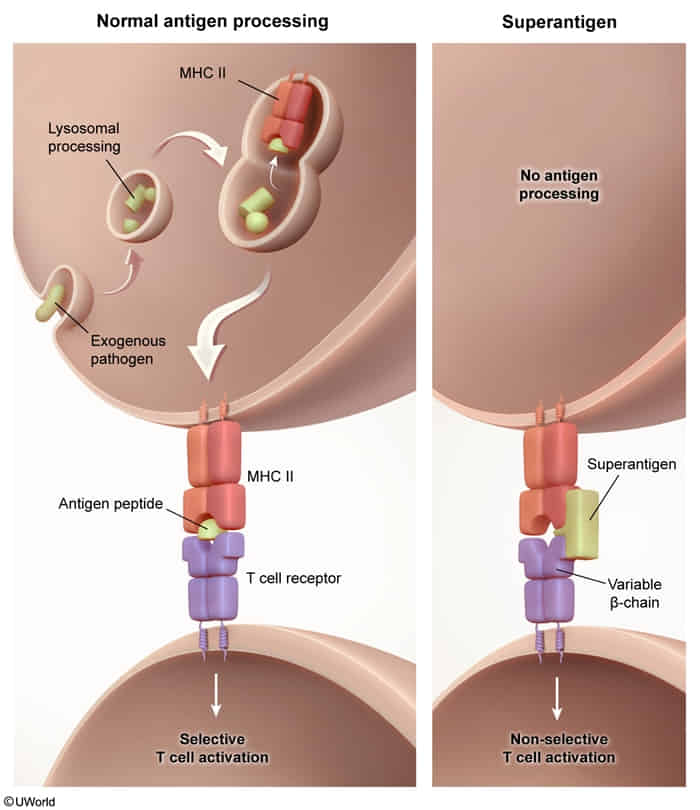Epidemiology
Etiology
TSS is most commonly caused by toxin-producing strains of Streptococcus pyogenes and Staphylococcus aureus
- Staphylococcal TSS
- Menstrual factors (∼ 50% of cases)
- High-absorbency tampons
- Prolonged placement of tampons, menstrual cups, and vaginal sponges
- Nonmenstrual factors
- Burn and wound infections
- Postpartum or postabortion infections
- Postsurgical wound packing
- Menstrual factors (∼ 50% of cases)
Pathophysiology
- Superantigen production: Causative organisms (S. pyogenes and S. aureus) produce superantigens
- Superantigen-mediated T-cell activation
- Superantigens bypass processing and presentation by antigen-presenting cells.
- Superantigens directly connect the MHC class II molecule on antigen-presenting cells to the T-cell receptor on T-cells by forming a bridge outside of the normal binding sites → nonspecific T-cell activation → rapid activation of excessive numbers of T cells → massive cytokine release

- SIRS: ↑↑↑ Cytokines → generalized endothelial disruption → capillary leak syndrome → generalized edema → intravascular hypovolemia → organ dysfunction and disseminated intravascular coagulation (DIC)
Clinical features
Prodrome
- Flu-like symptoms: high fever, chills, myalgia, headache, nausea, vomiting, diarrhea
- Dermal rash: more common in menstrual staphylococcal TSS than in nonmenstrual staphylococcal TSS and streptococcal TSS
- Transient erythematous macular (sunburn-like) rash
- Commonly involves the palms and soles
- Typically desquamates 1–2 weeks after onset.
Shock and end-organ dysfunction
- Early: tachycardia, tachypnea, high fever, altered mental status
- Late
- Hypotension
- Delayed capillary refill
- Worsening altered mental status
- Evidence of organ failure